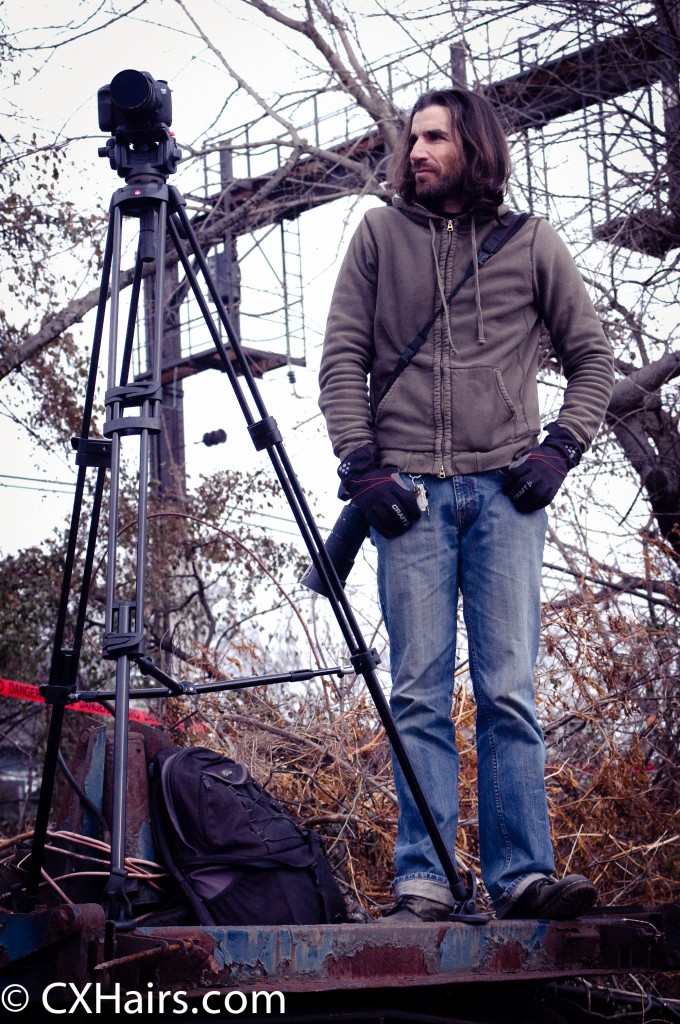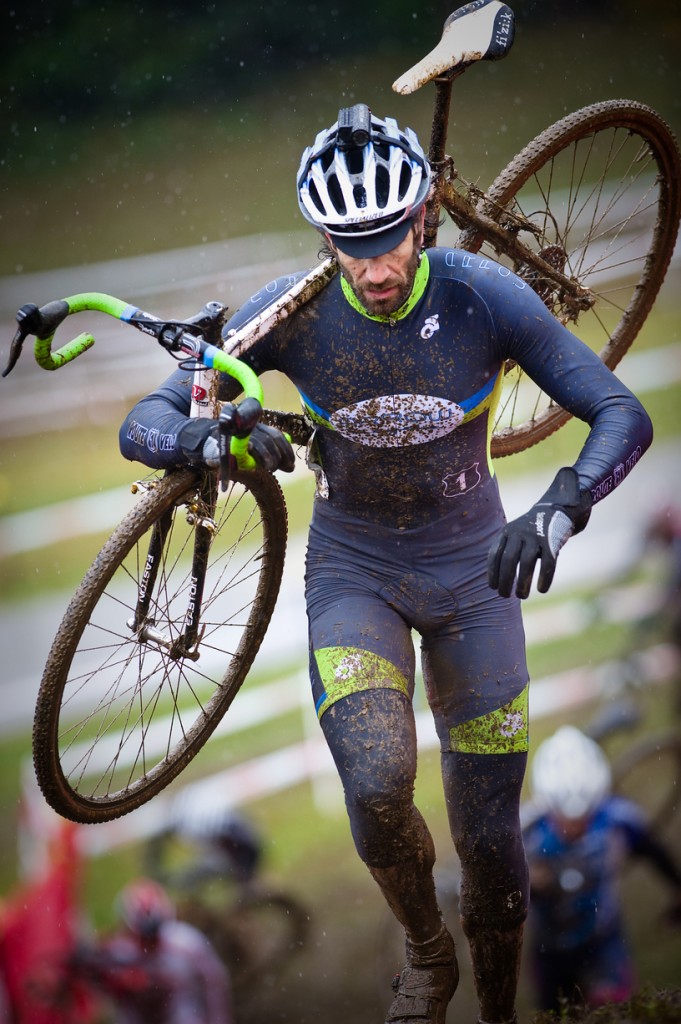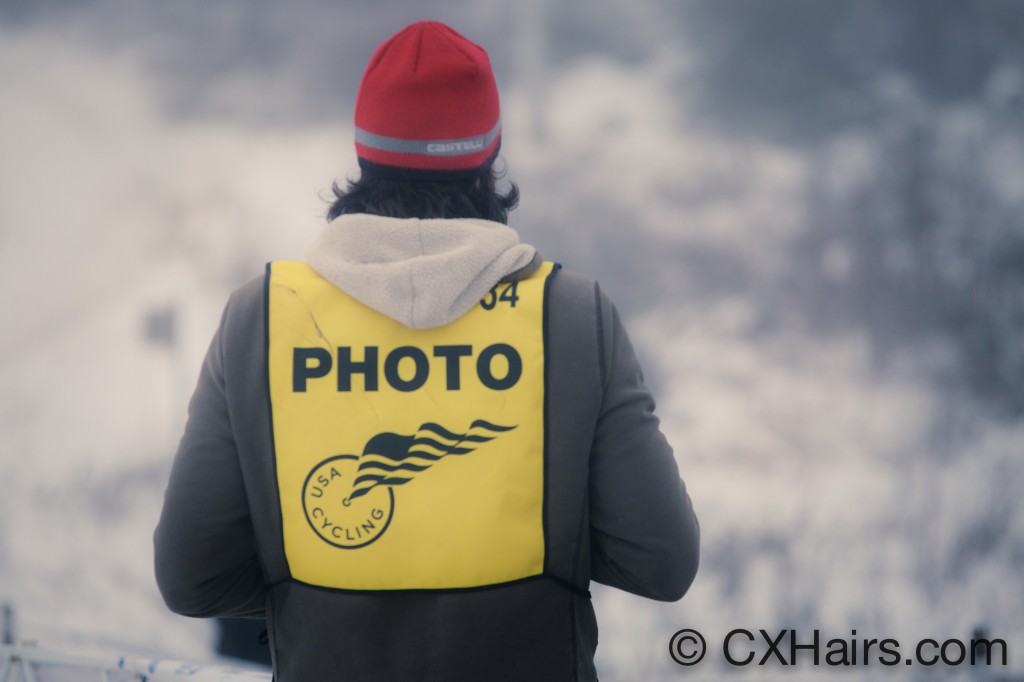Cyclocross lends itself to obsession. Participants either love it and go all in or hate it vehemently. Rare is the middling cross racer with a lukewarm attitude. Bill Schieken of In The Crosshairs falls squarely among the cross obsessed. He is best known for SVENNESS, a web series that recaps the major international cyclocross races and breaks down racers’ technique and strategies. (The title is a play on Sven Nys’ name and a nod to his dominance and nearly-unparalleled bike handling skills). But SVENNESS is just the tip of Schieken’s cyclocross iceberg. He also launched a similar web series, Like a Vos, that’s focused on women’s racing, runs a cycling team, wrote a cyclocross skills book, is a photographer, announces races, is a race series director, and occasionally finds time to actually race. I spoke to Bill about the evolution of In the Crosshairs, SVENNESS, Skills, Drills, & Bellyaches, his history with racing, and much more.
How did In The Crosshairs get started and what was your original goal for the project?
I think it was 2008. Originally it was really regional, focused on the mid-Atlantic cyclocross scene. I started the site really just out of my own curiousity. I had a list of questions for people who ended up on the podium at the races I was going to. This was local racing, no superstars, but the local heroes. I’d email them and have them answer six or seven questions, from the crowd favorite of what did you have for breakfast to how did you prepare, what’d you think of the course, what was your strategy? I’d ask seven or eight people the same questions and then catalog it. It’d be question and answer format and I’d do it throughout the season.
The next year I joined that first wave of doing helmet cam stuff. I did that for about a year, still with the local scene. That evolved with Dan Tille who owns Fulcrum Coaching and Chris Mayhew a coach with JBV Coaching. They’d come and do voiceovers with the helmet cam footage and do course previews. Say I filmed a lap of a race in 2009, in 2010 those guys would come in and do a voiceover with advice about how to race the course. I’d put those out about a week before each race so people could see what the courses looked like and get pro tips for how to approach everything. I did that for another year or two, then moved on from there to more national and international scene.
All the while I was doing photography and writing some articles as well. The gist though was always the local cyclcross scene.
How did it shift from those early interviews to its current incarnation of mostly post world-cup race analysis?
We started hosting cyclocross clinics with Jeremy Powers and Dan Tille in the DC area every year. At the same time I had an idea for writing a skills book. Simon Burney’s book was great, but it was the only one out there for years. By doing these clinics and being with Jeremy and seeing these guys coach, I realized there was a lot of stuff that wasn’t being covered and techniques that had evolved. The book was almost a two year process from having the idea to actually printing it. In that time I was getting really critical about technique and really critical about race strategy. I was watching these pro races and had the idea for more analysis on that level. SVENNESS grew out of that. I was able to go back and say “look what they’re doing here. Look how this decision affected the race.” It was much easier to do on the international level because the coverage is so amazing. You can get such great looks at a race because they have 15 cameras out there on cranes and dollies and everything else.
Have you been at all surprised at the reception? Especially this season of SVENESS, it really blew up and spread far and wide on the Internet.
Beyond anything I could imagine. This year was a lot of fun. It was sort of insane how popular it got. It kept me on my toes too. People would tell me “that was your best one” and I kept thinking there’s going to be one where I fall flat on my face here. The more people liked it, the more nervous I got about putting out the next one. But it was a blast.
From that first time Sven Nys himself tweeted about it to getting messages from guys like Ian Fields, the British National Champ, saying “great job, but here’s something you should know.” Sort of inside baseball stuff, which was just awesome. Nothing I ever expected.
One thing about SVENNESS and Like a Vos, the music is sort of polarizing. Some people like it, some people wish there wasn’t any music at all. The main reason it’s there is every time I put on a text block the background noise disappears, so music ties it all together. I started using mostly unsigned bands and buying their stuff off Bandcamp. When I post the episodes I try to follow it up with a tweet that tags all the bands and links them. I’ve gotten some really cool feedback from people who are contacting bands saying they listened to them on SVENNESS and bought the music. That made me really happy. I didn’t want anyone to think I was just stealing the music and it’s been nice to support bands at the same time.
Did that feedback from pros like Fields help evolve your understanding of pro cross?
Absolutely. The Ian thing was really neat. I try to take an everyman approach. If someone tells me I got something wrong I’ll go back and take a look and change it. Some SVENNESS episodes have been reposted three or four times because I had to change something I got wrong. The BPost Trofee has a sprint competion. They have a different banner about halfway through the course. It’s really difficult, if you’re on the outside, to figure out how the points work for that competition. I looked on all the websites to figure out how you get points. I assumed it was every lap whoever came through first got points. But it turns out it was only on the second lap, which Ian explained to me. He had one race where he was actually out there and got the points. That kind of insight is really neat.
This is all clearly very much a hobby gig for you. How much time are spending putting the episodes together?
The process is usually a late night thing. From watching the race a couple times to editing, I’d say about 8-10 hours go into each one. It’s fun, so it’s the sort of thing where once I get editing, the time disappears and I’ll be like crap, it’s three in the morning and I have to go to work in a couple of hours.
In addition to doing that, I’m the series director for the Super 8 series, a pretty large cyclocross series in the mid-Atlantic. I announce races. I’ve got my own team. So one thing this all lead to this year was I didn’t race at all. That was the sacrifice. I mean, I love doing this stuff, so it didn’t feel like a sacrifice. But I didn’t do any races.
You’re clearly very involved in the cyclocross world. Tell me about your personal history with bike racing.
I grew up riding a bike. I always rode everywhere. When I was in grade school we lived in Iowa City. You’d ride everywhere. My family moved to Virginia and same thing. I was always on the bike, but never competitively, I never raced.
I grew up playing basketball. I’m 6’5″, so I was tall for a while. Then I got to a certain level and was not anymore. I was really into playing basketball and coached for a while. A big part of team sports is about breaking down tape. I brought that over to bike racing with SVENNESS. I had a couple knee surgeries and couldn’t play basketball anymore. I started playing ice hockey when I moved to Minnesota and really loved that. When I moved back to DC, I was playing games at 11PM then drinking in the parking lot til 2. That was was all great before I had kids, but once that happened that schedule didn’t play very well. Then I found cyclocross and realized I could do that same thing and be drinking by noon.
I started cross about 2003. It seems pretty standard now, but at the time it was pretty weird to get into cycling through cyclocross. After I started racing cyclocross I got into road racing and mountain biking. People have been doing cross for so long, that even after 11 years I still feel like I’m new.
Though at the same time, having 11 years under your belt makes you a veteran compared to a lot of American racers. The cyclocross boom didn’t really happen until 2008 or 2009.
The place where I was doing my first races, the Cap Cross Classic at Lake Fairfax Park in VA used to have two races a year and there might’ve been 60 racers total in a day. We have a race there now and there are 500-600 people per day racing it. It’s just amazing how much cyclocross has blown up in the past decade.
What’s the plan for In The Crosshairs from here? Are there other projects in the works?
Skills, Drills, and Bellyaches is the book I wrote with Dan Tille. Bruce Buckley did the photography and copy editing on that. Jeremy Powers is in it. That was the big project for me. I’m still promoting that. I’ll go back to Interbike and I hope to be involved with CrossVegas again. Next year I’ll continue with SVENNESS and Like a Vos. I’m hoping to do more of that. I wish I could do more of women’s racing. The problem is that the series other than the World Cups, BPost Trofee, and Super Prestige, they don’t televise the women’s racing. I wish they would and if they did, I’d have more opportunity to give them equal time.
Other than that, I’ve got a couple of little book ideas. I also used to do a lot of my own film stuff. I made a short movie on the Bilenky Junkyard Cross race a few years ago, which went in a couple of little film festivals. That was fun and I’d like to get back into making films instead of just editing other peoples’ footage.
I have side gigs like photographing the Mountain Bike Nationals for USACycling. I hope to do that again. As far as the site, SVENNESS and Like a Vos definitely have become the foundation, so I don’t see any reason to move away from that. It’s just about trying to figure out how to compliment it and keep things interesting for myself.
Like what you read on The Bicycle Story? Support the work with a donation or by buying a shirt.





One Response to Bill Schieken: Cyclocross Passion and the Art of SVENNESS